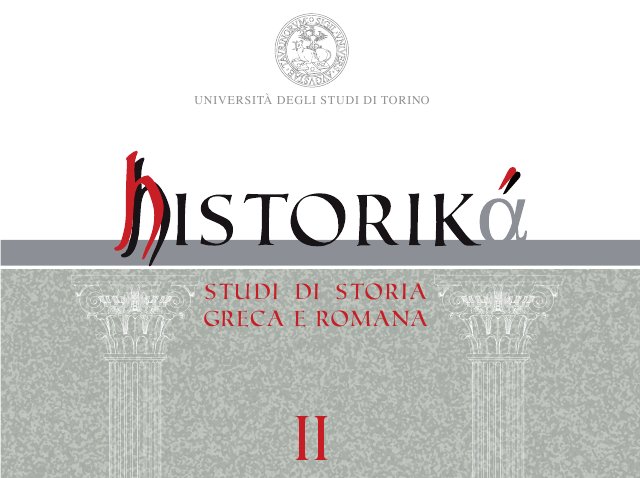I boularchoi in Etolia
Abstract
La carica del boularchos, diffusa in area microasiatica tra età tardo ellenistica e imperiale, è attestata anche in Grecia continentale (Focide, Locride Ozolia, Acarnania, Etolia, Acaia) a partire dalla fine del V e soprattutto nel corso del III-II sec. a.C. L’articolo analizza la figura del boularchos nel contesto etolico, con il duplice obiettivo di chiarire meglio le funzioni, peraltro poco note, di questa magistratura e di gettare luce sull’organizzazione stessa dello stato federale etolico. La documentazione epigrafica porta a ipotizzare che il boularchos fosse una delle cariche supreme del koinon e che potesse coadiuvare con funzioni esecutive lo stratego, e talvolta farne le veci. Il legame tra boularchos e sinedrio non appare invece assodato, mentre l’accrescimento del collegio dei boularchoi nel corso del tempo va collegato a un generale sviluppo dello stato federale etolico, piuttosto che non alla sua espansione e organizzazione in distretti. Questi boularchoi, presenti nella documentazione del koinon, vanno distinti da un’altra tipologia di boularchos, attestata in iscrizioni prodotte a livello locale: il boular-chos del Lokrikon telos, presente a Naupaktos e Delfi, e quello dello Stratikon telos, attestato Stratos, dovevano essere infatti boularchoi con competenze sui territori annessi dagli Etoli e organizzati in tele. L’analisi della documentazione epigrafica suggerisce che queste figure non fossero rappresentanti delle comunità locali all’interno degli organi centrali, ma piuttosto figure nominate a livello centrale per l’amministrazione dei territori annessi.
The office of the boularchos, widespread in the Microasiatic area between late Hellenistic and imperial period, is also attested in mainland Greece (Phocis, Locris Ozolia, Acarnania, Aetolia, Achaea), starting from the end of the Vth and especially during the III-II century BCE. This paper analyzes the boularchos in the aetolian context, with the twofold aim of clarifying the functions of this official, moreover little known, and to shed light on the organization of the Aetolian federal state itself. The epigraphic evidence leads us to suggest that the boularchos was one of the supreme officials of the koinon and could assist the federal strategos in his executive functions, sometimes acting in his place. The link between boularchos and council (synedrion) should not be taken for granted, while the growth of the board of boularchoi over time must be connected to a general development of the Aetolian federal state, rather than to its expansion and organization into territorial districts. These boularchoi, mentioned in the documents issued by the koinon, should be distinguished from another type of boularchos, attested in inscriptions produced locally: the boularchos of the Lokrikon telos, attested in Naupaktos and Delphi, and that of the Stratikon telos, attested in Stratos, should probably be boularchoi with competence on the territories annexed by the Aetolians and organized into tele. Analysis of epigraphic evidence suggests that these figures were not representatives of the local communities within the central government, but rather officials nominated at the central level in order to administrate the annexed territories.
Gli autori che pubblicano su questa rivista accettano le seguenti condizioni:
- Gli autori mantengono i diritti sulla loro opera e cedono alla rivista il diritto di prima pubblicazione dell'opera, contemporaneamente licenziata sotto una Licenza Creative Commons - Attribuzione che permette ad altri di condividere l'opera indicando la paternità intellettuale e la prima pubblicazione su questa rivista.
- Gli autori possono aderire ad altri accordi di licenza non esclusiva per la distribuzione della versione dell'opera pubblicata (es. depositarla in un archivio istituzionale o pubblicarla in una monografia), a patto di indicare che la prima pubblicazione è avvenuta su questa rivista.


 The journal has been approved for inclusion in DOAJ. The DOAJ listing of the journal is available at
The journal has been approved for inclusion in DOAJ. The DOAJ listing of the journal is available at 
